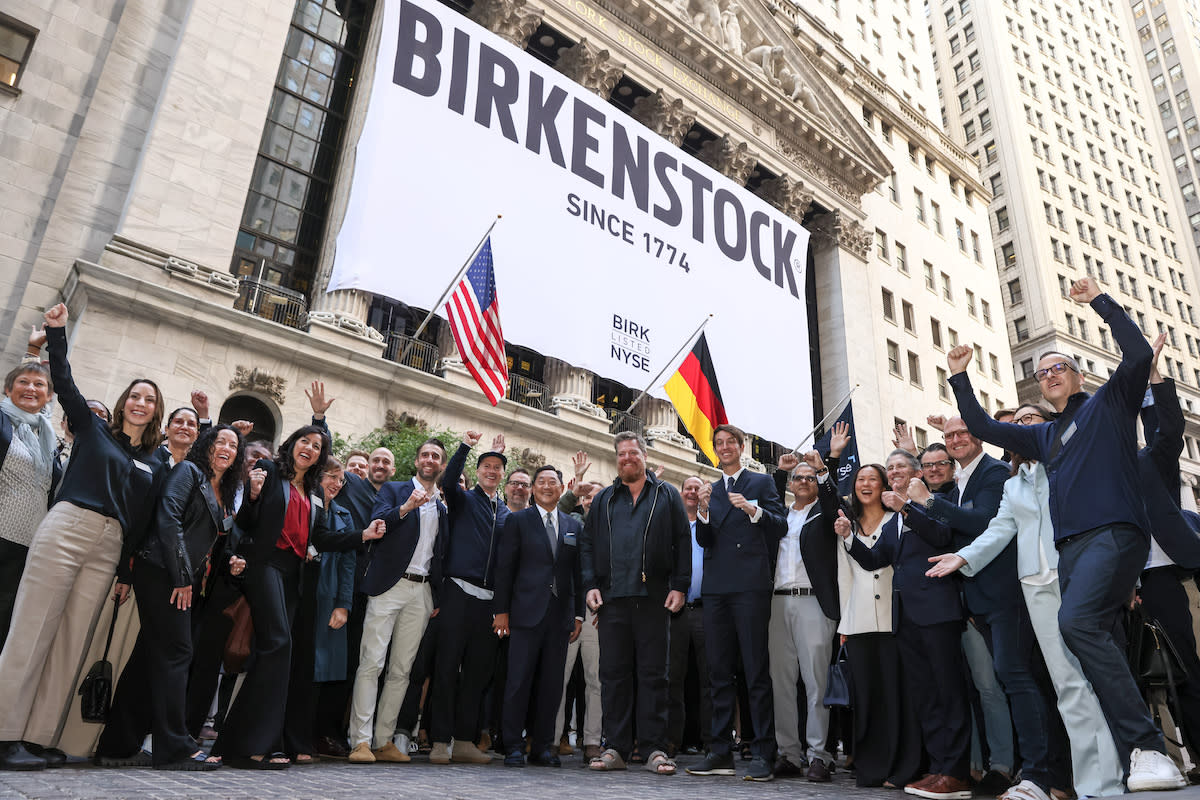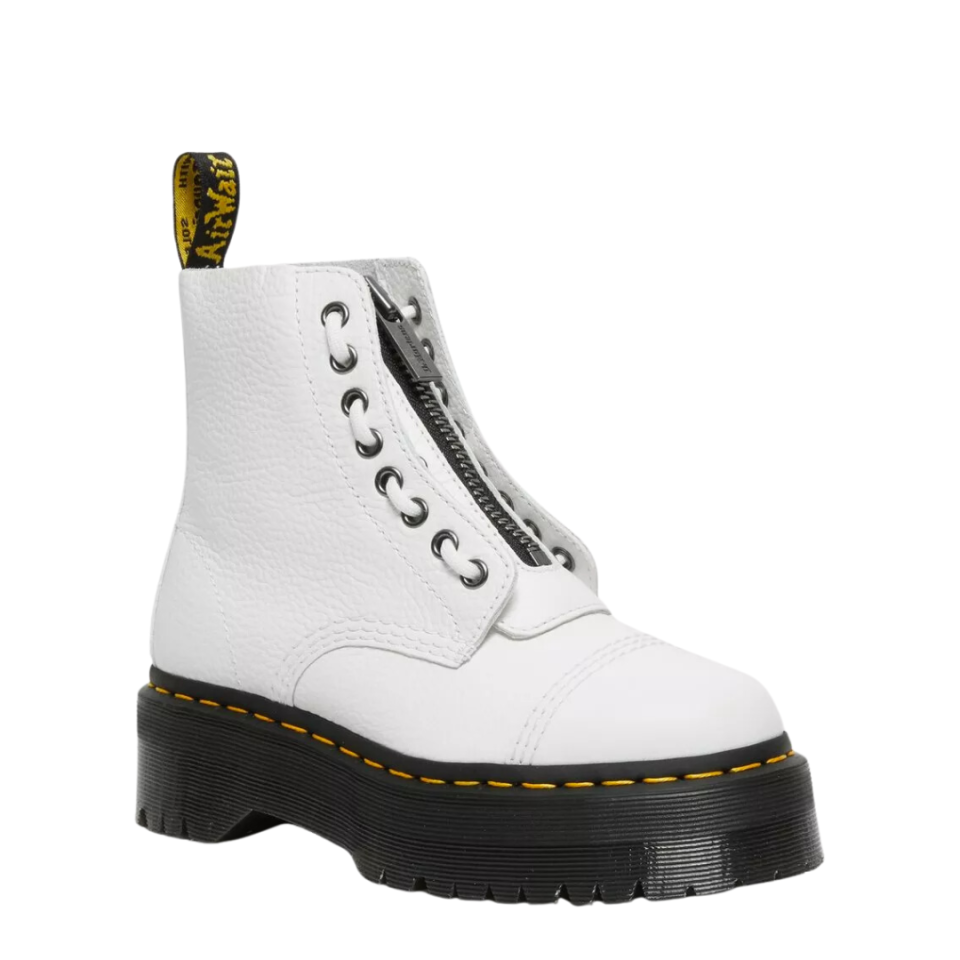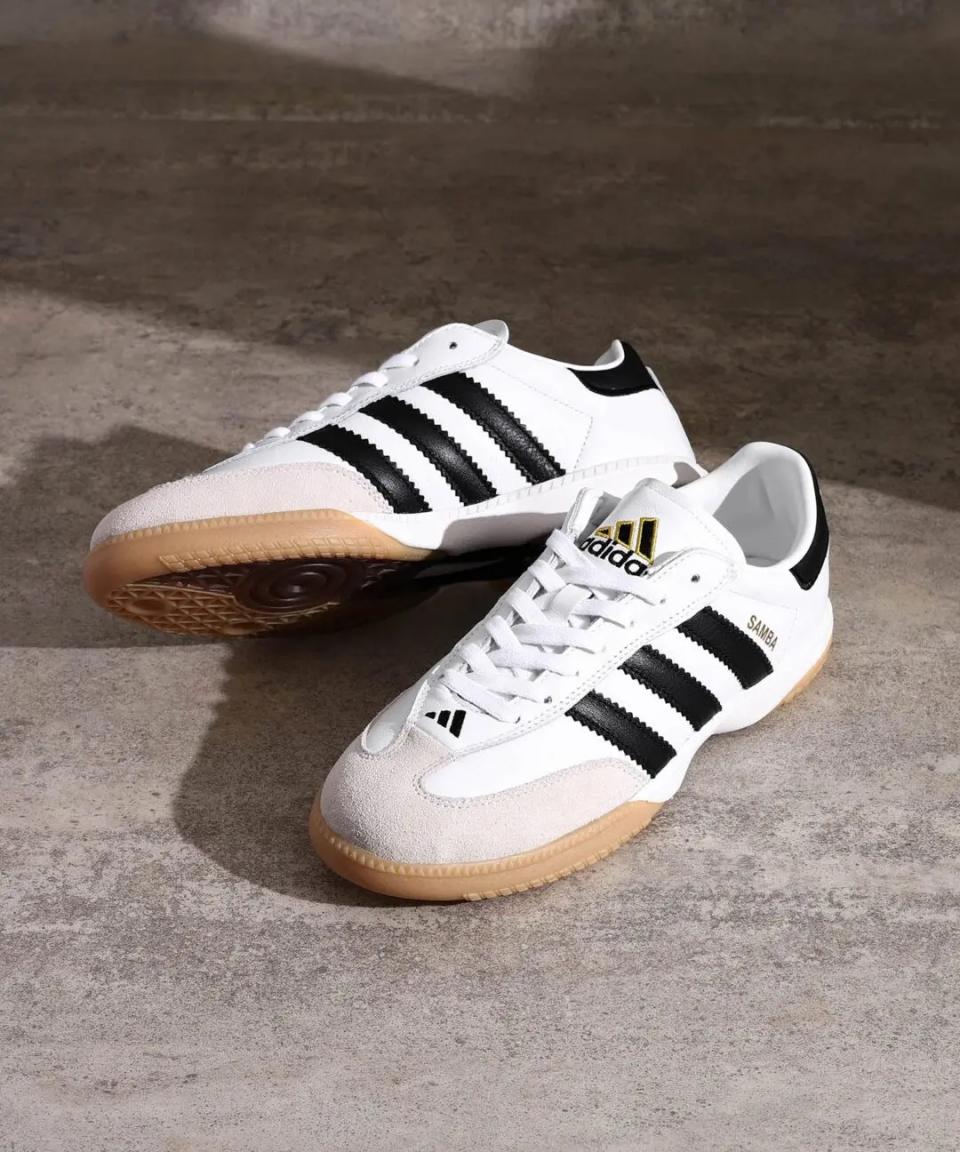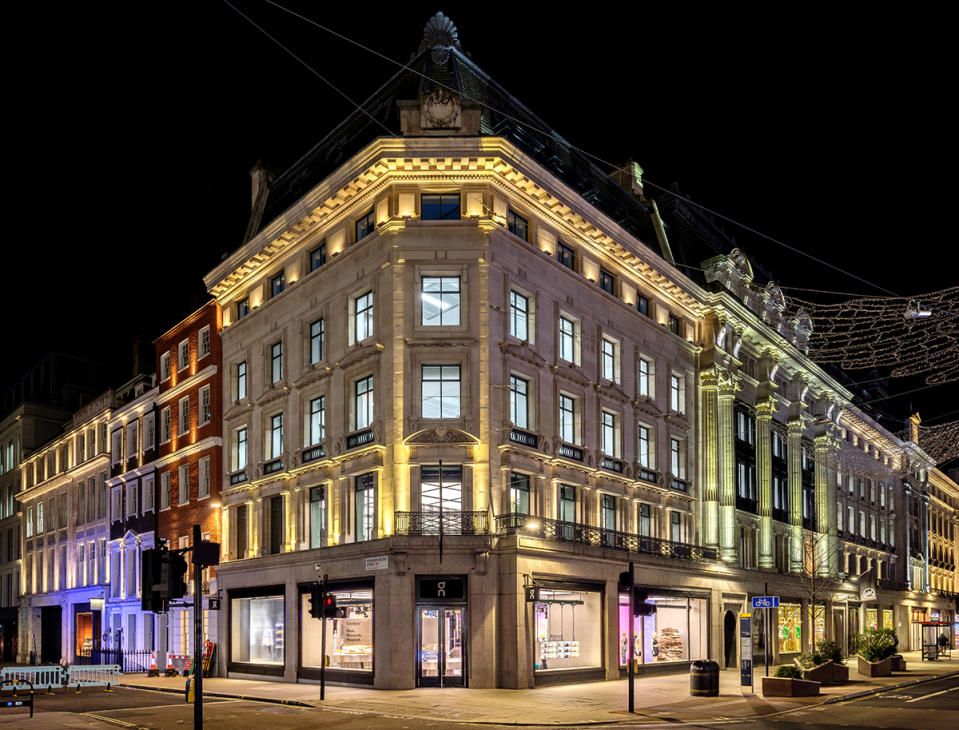The Top 10 Biggest Footwear IPOs of All Time

While tech firms like Alibaba, Facebook and Uber take the prize for the biggest IPOs of all time, footwear debuts have gotten more lucrative in the last several years.
In fact, several recent initial public offerings, including Birkenstock (2023), Dr. Martens (2021) and On Holding (2021) are among the largest footwear IPOs of all time.
More from Footwear News
Dr. Martens Launches Reclaimed Leather Collection as Part of Sustainability Initiative
Dr. Martens' Latest Supreme Collaboration Features Shoes Made to Change Color Over Time
While this might be surprising for some, there are several factors contributing to the boom: For one thing, inflation in stock values is one reason so many recent market entries were able to raise significant amounts in their public market debuts.
The S&P 500 index has returned a historic annualized average return of around 10.3 percent since its 1957 inception through the end of 2023. A rising stock market supports ever-higher valuations for new offerings coming to market.
In addition, private equity money is boosting the market. Jim Duffy, veteran footwear analyst at Stifel, said more PE firms are making investments in “latter stage companies and keeping companies private for a longer period of time,” also supporting higher valuations versus the start-ups that often went public in the past.
Infrastructure investments made by the acquiring firms are “helping companies establish proof of concept,” he noted.
At Dr. Martens and Birkenstock, for examples, the brands used private-equity partnerships to accelerate growth in the years before going public and established platforms for further growth. Duffy also noted that pre-IPO investments helped Swiss running brand On gain a strong foothold in the U.S. and establish a solid DTC presence before going public.
On the downside, Duffy said smaller footwear firms may face more hurdles going public than in the past as investors are looking to invest in brands that have the potential to net a billion in annual sales. However, he said that regardless of size, the market continues to reward growth.
Duffy said, “Tangible growth and tangible growth drivers – that’s where the public markets have appetite.”
Many of today’s major footwear firms with the highest market capitalizations went public when they were young upstarts and needed the funding to get started.
Among footwear’s large caps, Nike (current market cap: $153 billion) went public in 1980, four years before signing Michael Jordan as a brand ambassador. Deckers Outdoor (market cap: $23 billion) went public in 1993, two years before acquiring Ugg. Nike raised only $22.5 million in its IPO while Deckers netted less than $40 million. Skechers (market cap: $9 billion) raised $77 million in its 1999 IPO when the brand only operated 23 concept stores and 19 factory outlet stores.
Among footwear players coming close to making the top-ten list, Crocs (market cap: $7.6 bn) netted $208 million in its IPO in 2006 in its fourth year in business. Crocs’ sales reached $4 billion in 2023 compared to $354.7 million in 2006. Nine West Group raised $140 million in a 1993 offering; Heelys, $135 million in its 2006 public-market debut; and Boot Barn, $135 million in a 2014 IPO.
Dr. Martens
• IPO Date: Jan 29, 2021 (London Stock Exchange)
• Capital Raised: $1.78 billion
The classic British boot earned a $5 billion valuation in its initial public offering during the height of the pandemic. The offering, which was eight times oversubscribed, marked a major win for Dr. Martens majority owner, private-equity firm Permira, which bought the company in 2014 for $485 million. Under Permira’s ownership, Dr. Martens significantly increased its global presence, opened new stores and expanded its e-commerce offering, growing sales four-fold between 2013 and 2020. The Griggs family, which came up with the iconic 1460 Dr. Martens boot in 1960, had retained a 10 percent stake in the Permira sale. Shares of Dr. Martens have been shaved to about a third of its IPO price as the brand has warned the 2023 sales are expected to decline 10 percent due in large part to weakness in the U.S.

Birkenstock
• IPO Date: Oct. 11, 2023 (New York Stock Exchange)
• Capital Raised: $1.48 billion
Shares of the German sandal maker started trading at $41 per share after being priced at $46, marking the worst debut by a company worth over $1 billion in nearly two years. The stock closed down 21 percent by the end of Birkenstock’s first week of trading. Birkenstock’s fundamentals were still seen as solid with aggressive DTC pushes, extensions to closed-toe offerings and designer collaborations all contributing to increasing sales four-fold from 2014 to 2022. The stock’s underperformance was largely attributed to an over-eager valuation and concerns over luxury spending amid a broader slowdown. Shares have recovered, now trading about $46. The IPO valued Birkenstock at $8.6 billion, double the $4.35 billion paid by L Catterton, the U.S. private-equity firm backed by LVMH’s chairman and CEO Bernard Arnault, to acquire the business in 2021.
Adidas
• IPO Date: Nov. 17, 1995 (Frankfurt Stock Exchange)
• Capital Raised: $1.3 billion
Adidas’ IPO in 1995 came five years after the last remaining members of the founding Dassler family sold their shares for only $320 million and two years after the company was on the brink of bankruptcy due to mismanagement by new owners and intense competition from Reebok and Nike in the U.S. Under the leadership of Robert Louis-Dreyfus, Adidas enacted a turnaround that included moving factories to Asia, slashing payroll by two-thirds and hiking spending on marketing. By 1997, shares had tripled, and the Adidas brand would soon pass Fila and Reebok to claim its long-standing spot as the second largest sports brand in the world, behind Nike. Adidas’ market cap is now about $40 billion.

Belle International Holdings
• IPO Date: Aug. 9, 2007 (Hong Kong Exchange)
• Capital Raised: $1.1 billion
China’s top women’s shoe retailer – with 18,000 stores in mainland China and about 150 in Hong Kong and Macao – raised $1.1 billion in 2007 in what at the time was the largest IPO abroad by a Chinese consumer company. The offering, which gave Belle a market value of $8.6 billion, was priced at the top of the range. In recent years, Belle has struggled to adjust to the shift to online selling. In 2017, Hillhouse Capital and CDH Investments privatized Belle in a deal worth $6.8 billion, making it the most expensive privatization in the history of Hong Kong’s stock market. The company also manufactures its own shoes under brands including Belle, Staccato, Teenmix and Tata.
On Holding
• IPO Date: Sept. 15, 2021 (New York Stock Exchange)
• Capital Raised: $746.4 million
On Holding went public with a market value of $7.3 billion only 11 years after being founded. Hyped in part by the presence of tennis legend Roger Federer as an investor and partner in establishing the brand in the tennis category, the Swiss running footwear maker’s IPO priced at $24, $2 above the top of its projected range and vaulted 45.8 percent to close at $35 in its first day of trading. Largely driven by gains in its core running category and success in lifestyle offerings, On’s sales grew 68.7 percent and 70.4 percent in 2012 and 2022, respectively; and are expected to climb 51.0 percent in 2023. Shares fell as low as $15.91 in late 2022 amid supply chain challenges, but have recovered, now trading at around $35.

Anta Sports
• IPO Date: Jul. 3, 2007 (Hong Kong Exchange)
• Capital Raised: $406 million
Led by billionaire brothers Ding Shizhong and Ding Shijia, Fujian Province-headquartered Anta Sports was founded in 1991, went public in 2007, and now ranks as the third largest sports brand globally behind Nike and Adidas. Growth has been boosted by the success of its flagship Anta brand, which targets the mass market in China, as well as a multi-brand strategy, including the licensed Fila brand selling into China and Hong Kong. The Anta brand is also pursuing growth in Western countries, marked by the signing of NBA stars, Klay Thompson, Gordon Hayward and recently, Kyrie Irving. Shares are now trading at around Hong Kong$81 (U.S.$10), up from the 2007 IPO price of HK$5.28 (U.S.67 cents).
Stella International
• IPO Date: July 6, 2007 (Hong Kong Exchange)
• Capital Raised: $387 million
Established in 1992 in Taiwan, Stella is one of the largest footwear manufacturers in the world, primarily targeting the Chinese market. The sports category makes up approximately 42 percent of Stella’s sales with partners including Nike, Under Armour and Saucony. Fashion and casual both make up about a quarter with luxury the smallest portion of the business. Other brand partners include Ugg, Timberland, Merrill, Cole Haan, Tory Burch, Michael Kors and Balenciaga. While slowed by disruptions caused by the pandemic, Stella’s growth has benefited from a healthy fashion athletic trend since its IPO year. Sales reached U.S.$1.49 billion in 2023, up 59 percent from $937.2 million in its 2007 IPO year.
Designer Brands (formerly DSW Inc.)
· IPO Date: July 5, 2005 (New York Stock Exchange)
· Capital Raised: $272 million
DSW Inc., founded in 1969, went public in July 2005 when the shoe chain had 177 stores. In March 2019, DSW rebranded its corporate name to Designer Brands to reflect its acquisition of Camuto Group and other planned investments in owned and licensed brands. The company now has 640 DSW and The Shoe Company stores in North America; owned brands including Vince Camuto, Topo Athletic and Keds; as well as several exclusives on licensed brands. Shares of the company traded as high as $44 in 2013 but have sunk amid repositioning efforts and are now trading just above its split-adjusted IPO price of $9.50.
Jimmy Choo
• IPO Date: Oct. 17, 2014 (London Stock Exchange)
• Capital Raised: $251 million
Jimmy Choo, which rose to prominence in the early 2000s and became a household name, was became the first luxury shoe company to go public, listing in 2014 on the London Stock Exchange. The brand, known for its stiletto heels, delivered solid growth in ensuing years as it was able to weather a slowdown in China’s economy and a broader shift away from conspicuous consumption. In early 2017, majority-owner JAB, the investment vehicle of Germany’s billionaire Reimann family, put Jimmy Choo on the selling block and Michael Kors snapped up the brand for $1.2 billion. The business was valued at $730 million in its IPO. Last August, Tapestry, the parent of Coach, Kate Spade and Stuart Weitzman, agreed to acquire Capri Holdings, the owner of Versace, Jimmy Choo, and Michael Kors, in a $8.5 billion merger.
Best of Footwear News
Sign up for FN's Newsletter. For the latest news, follow us on Facebook, Twitter, and Instagram.

